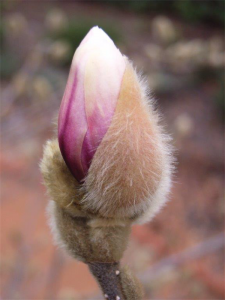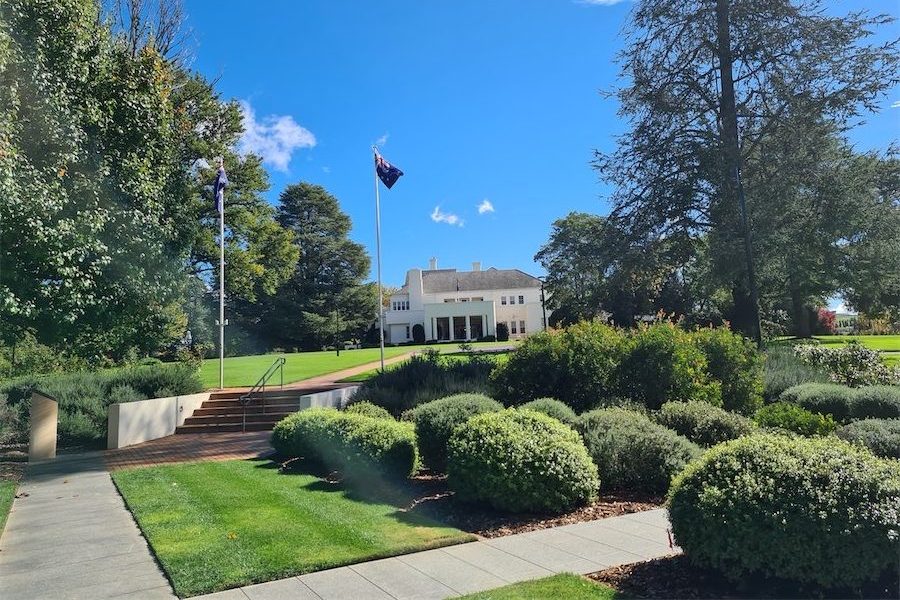
MAGNOLIAS present a magnificent floral display in spring, particularly in the older southside suburbs, yet it’s hard to imagine that in the wild they are in danger of dying out.
“The Red List of Magnoliaceae“ (published by Botanic Gardens Conservation International) assesses 304 of the main species of magnolia.

Using criteria from the International Union for Conservation and Nature, there are 121 are endangered or critically endangered. This includes the ever popular Magnolia stellata or Star magnolia shown here just starting to emerge from its winter coat. For more details on plant species endangered by climate change go to bgci.org
Many new varieties of magnolias come from the Jury family of NZ. First Felix Jury, now followed by his son Mark, who raises hundreds of seedlings, of which only the finest are used. The expression “second best” does not exist in their breeding program. Examples of their magnolias include Magnolia “Black Tulip” with purple-black blooms up to 15cm across. Burmese political leader Aung San Suu Kyi planted one with the Prince of Wales in Clarence House, London. M. “Burgundy Star” is a real showpiece with an abundance of claret-red flowers, it is a compact magnolia (to three metres tall x one metre wide), ideally suited for the smaller garden.

The M. “Honey Tulip” is a new addition to the range, also growing to three metres. This early flowering magnolia has golden honey coloured, goblet-shaped flowers 15cm across. All these were bred in NZ and are ideal for Canberra’s climate and available from most garden centres.
WORMS along with frogs are the most important indicators of climate change. They are vital for the health of soil. If it is too wet or, even more so, too dry they will not survive.
According to the English “Country Life” magazine: “Along with all the teeming thousands of creatures in the soil, they outnumber us; consider this, a single teaspoon of soil contains more life than there are people on the planet.
“The worm’s unseen contribution to soil structure could help us overcome some highly apparent 21st century problems.”
Over the centuries, farmers have deep ploughed their fields with mould-board ploughs. Indeed, my father and his father before him all prepared the ground this way for the next crop.
However, little did they realise the detrimental effects on the worm population and health of the soil.
Deep digging destroys not only the earthworms and others in the soil, it can in many instances bring the clay to the surface. Deep digging is unnecessary; the worm population in a healthy soil will do this, unless the worms have been destroyed by chemical fertilisers.
Obviously, in planting trees and shrubs some deep digging is necessary. For trees, always make the hole square, rather than round and when planting hedges always prepare a trench.
Jottings…
- Remove mulch from the top of iris rhizomes. Native to Spain, they love all the heat they can get for good flowering.
- Winter-flowering camellia sasanqua can be given a light prune now that flowering has finished.
- Finish planting summer flowering bulbs.
- Look for early movement of snails. Dr Harry Cooper’s recommendation for pet safety is Multicrop Slug and Snail Killer.
- Feed rhodos, azaleas, daphne and pieris.
- The Horticultural Society of Canberra’s Spring Bulb and Camellia Show will be at the Wesley Church Centre, National Circuit Forrest, noon-5pm, Saturday, September 17 and 11.30am-3.45pm, Sunday, September 18. Refreshments available and there’s a plant stall. Entry by donation.
Who can be trusted?
In a world of spin and confusion, there’s never been a more important time to support independent journalism in Canberra.
If you trust our work online and want to enforce the power of independent voices, I invite you to make a small contribution.
Every dollar of support is invested back into our journalism to help keep citynews.com.au strong and free.
Thank you,
Ian Meikle, editor




Leave a Reply